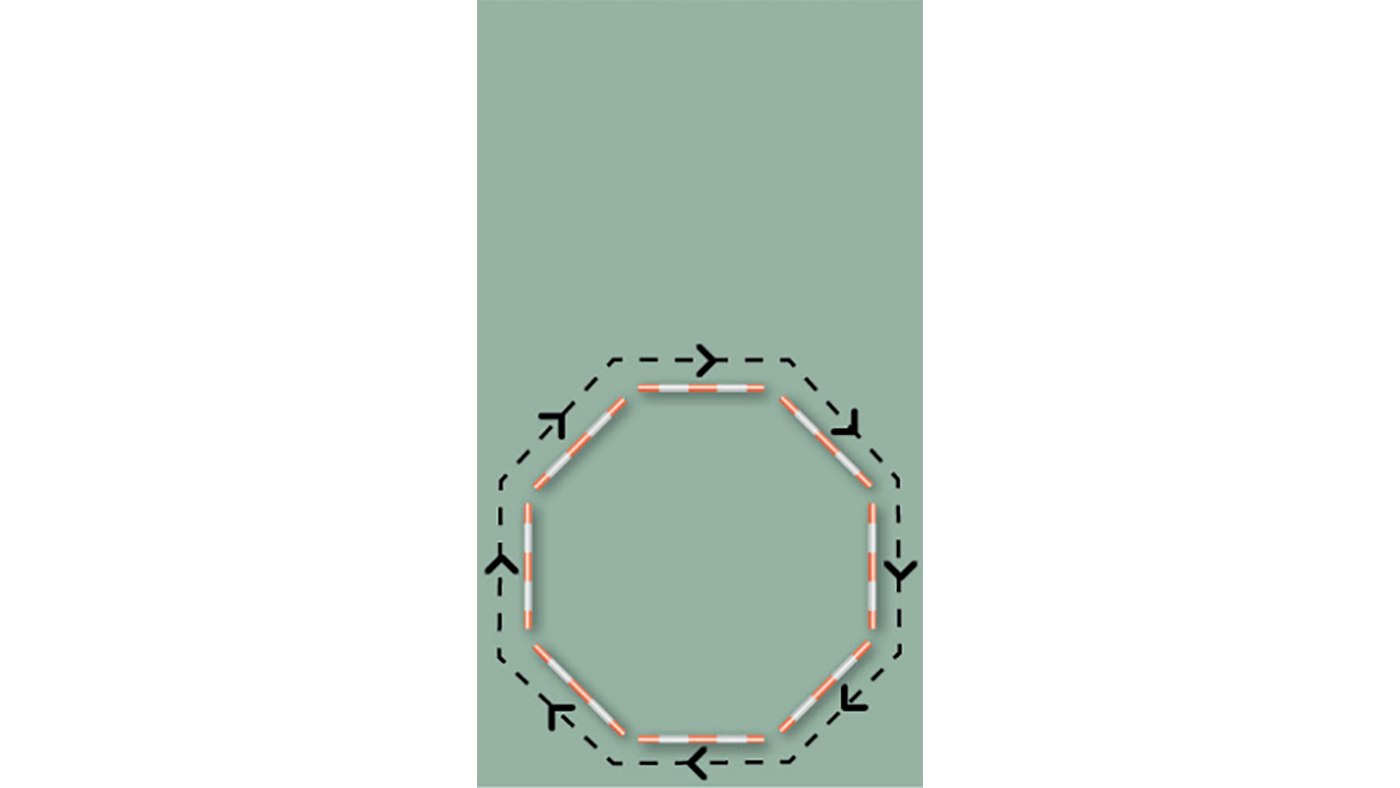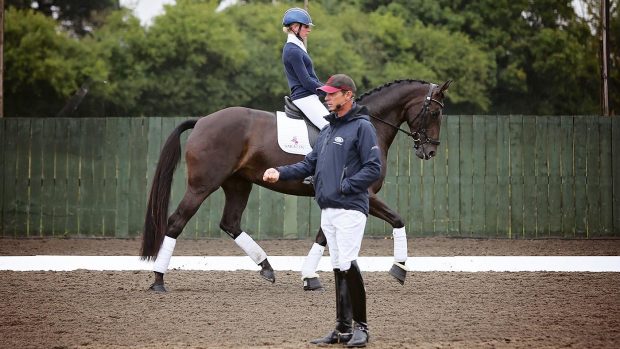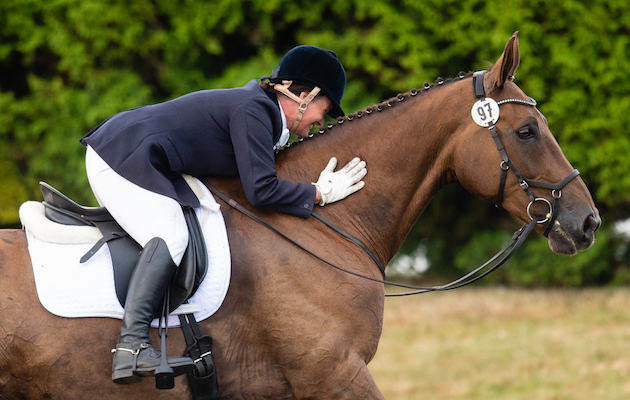Lesley Peyton-Gilbert (pictured), a senior assessor for the British Equestrian Federation futurity programme, has trained horses from youngsters to international grand prix, including stallions ZV Lagos and Woodcroft Garuda K. She has lived in the Netherlands and Germany, where she was trained by Ellen Bontje, Tineke Bartels and Ulla Salzgeber.
Training the stars
This is an exercise I use with all my young horses, but it is especially helpful for riders; it teaches them about timing, by half-halting and putting the leg on, after each pole.
In your test sheets, you may see the comment “on inside shoulder”. The judge is referring to a balance issue: the horse has fallen in on the inside shoulder on the circle — it feels as if the inside foreleg has become shorter. Learning how to ride a correct circle will encourage better engagement and balance, and result in higher marks.
Tackling the issue

1. I use the “50p coin” exercise with all riders and young horses — it encourages the hindleg to step under the body, helping engagement of the hindlegs and the connection between inside leg and outside rein. I had the idea for it when thinking of a circle as a train with carriages going through a bend.
2. Build an octagonal shape with poles on the ground (see diagram, above), using almost the entire width of the arena (about 18 metres). Ride just outside the poles, making sure you are parallel to them — use eight poles in the beginning so you get the feeling of riding parallel between two reins at all times. Later, as you become more proficient, you can remove some or all of the poles.
Remember that the horse has width, so the outside of the horse’s body has farther to go on a turn or a circle. We need to use our leg, light and quick, to encourage the horse to use his legs in the same way and step under — with the inside leg to carry weight, and with both outside legs to drive the turn.
If, on the turn, the horse steps against the inside rein, then you know he’s stepping against the inside leg, so this is the moment to use the inside leg to ask him to step forward and not “fall in”.
Conversely, should the horse fall out through the outside shoulder, correct him using the outside rein along the line of the body, not away from the neck.
The outside rein is there to provide support, and effectively contains the energy of the inside hindleg.
Article continues below…
You might also be interested in:

#SundaySchool: perfecting pirouettes with Rebecca Hughes
The international dressage rider and young horse producer explains how walk pirouettes can improve engagement for medium trot

What is medium trot, and what are the benefits for your horse?

Subscribe to Horse & Hound this spring for great savings
Consider this
- Sit “inside” your horse’s forelegs — so don’t lean in or over the inside shoulder through turns and circles. To prevent this happening, think of the point between the horse’s ears as a table to rest a tea cup on. You don’t want the tea to spill, so look through the ears and keep that point level through all turns and circles. This will also ensure the horse isn’t tilting.
- Never push down or pull back on the inside rein. Thumbs must be up, and thumbnails must face the direction of the ears. There should be a small gap between the inside rein and the neck — I like to put my fingers inside this gap.
For all the latest equestrian news and reports, don’t miss Horse & Hound magazine, out every Thursday



